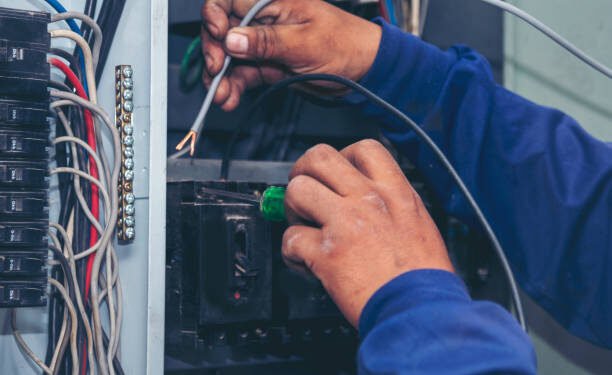Your home’s electrical panel is the heart of its power system, distributing electricity safely throughout your property. But how do you know when it’s time for an electrical panel upgrade? As homes add more high-power devices like EV chargers and smart appliances, many older panels can’t handle the demand. An electrical service panel upgrade improves safety, prevents outages, and prepares your home for future needs.
In this guide, we’ll cover warning signs that indicate you need an upgrade, the benefits of modern panels, and what to expect during the installation process.
Signs You Need an Electrical Panel Upgrade
Watch for these red flags that suggest your panel is outdated or overloaded:
- Frequent Circuit Breaker Trips – If breakers trip often, your panel may be struggling to handle current electrical loads.
- Flickering or Dimming Lights – This can indicate insufficient power distribution.
- Burning Smell or Scorch Marks – A serious hazard that requires immediate attention.
- Using Power Strips & Extension Cords Permanently – A sign your home lacks sufficient outlets.
- Old Fuse Box (Pre-1960s) – Fuses are outdated and less safe than modern circuit breakers.
- Adding High-Power Appliances – EV chargers, tankless water heaters, or HVAC systems often require an electrical service panel upgrade.
Benefits of Upgrading Your Electrical Panel
Increased Safety – Reduces fire risks from overloaded circuits.
Higher Capacity – Supports modern appliances and smart home tech.
Home Value Boost – A 200-amp panel is expected in today’s homes.
Code Compliance – Meets current National Electrical Code (NEC) standards.
Understanding Electrical Panel Upgrade Options
1. Standard Panel Upgrade (100 to 200 Amp)
Most older homes have 100-amp panels, while newer builds use 200-amp. Upgrading to 200 amps accommodates:
- Electric vehicle chargers
- Home offices with multiple devices
- Kitchen appliances running simultaneously
2. Service Panel Replacement
If your panel is damaged or extremely outdated (like a Federal Pacific or Zinsco brand), a full electrical service panel upgrade is necessary for safety.
3. Subpanel Installation
For homes with detached garages or additions, a subpanel can provide extra circuits without a full upgrade.
What to Expect During an Electrical Panel Upgrade
1: Professional Assessment
An electrician will:
- Check your current panel’s amperage and condition.
- Evaluate your home’s power needs.
- Obtain permits if required.
2: Power Shutoff & Panel Replacement
- The main power is disconnected for safety.
- The old panel is removed, and a new one is installed.
- Wiring is updated to meet code.
3: Testing & Inspection
- The system is tested for proper function.
- A local inspector may verify the work (if permits were pulled).
Cost of an Electrical Panel Upgrade
- 100 to 200-Amp Upgrade: $1,500–$3,500
- Full Service Replacement: $2,000–$4,500
- Subpanel Installation: $500–$1,500
FAQs About Electrical Panel Upgrades
1. How do I know if my panel is 100 or 200 amp?
Check the main breaker’s label. A 100-amp panel has a single 100-amp breaker, while a 200-amp has a larger double-pole breaker.
2. Can I upgrade my electrical panel myself?
No. Panel upgrades require licensed electricians due to high voltage risks and local permitting laws.
3. Will upgrading my panel prevent power surges?
A panel upgrade alone won’t stop surges, but it allows for whole-house surge protectors to be installed.




